How can I safely fix diastasis recti with exercise? Can I really close my gap without surgery? What if it’s been years since I had a baby?
These are just some of the questions I get on a regular basis from readers about diastasis recti. Wendy Powell from MuTu System, always generous with her time and resources, has answered hundreds of comments from y’all, and is also a frequent contributor to Inspired RD. I am excited to have her back today, sharing 5 exercises you can do right now to start fixing your diastasis recti. If you have any questions at all, please make sure to leave a comment. I swear by this program, and I know you will too!
(Not sure what diastasis recti is or if you have it? Click here to find out how to check your abs for diastasis recti. Click here for a comprehensive interview with Wendy Powell to learn more about diastasis recti.)
First, you need to FIND and connect with your deep core muscles.
(These first 2 exercise are the KEY movements of Phase 1 of MuTu Core!)
1. Drop Your Heel, Find Your Middle
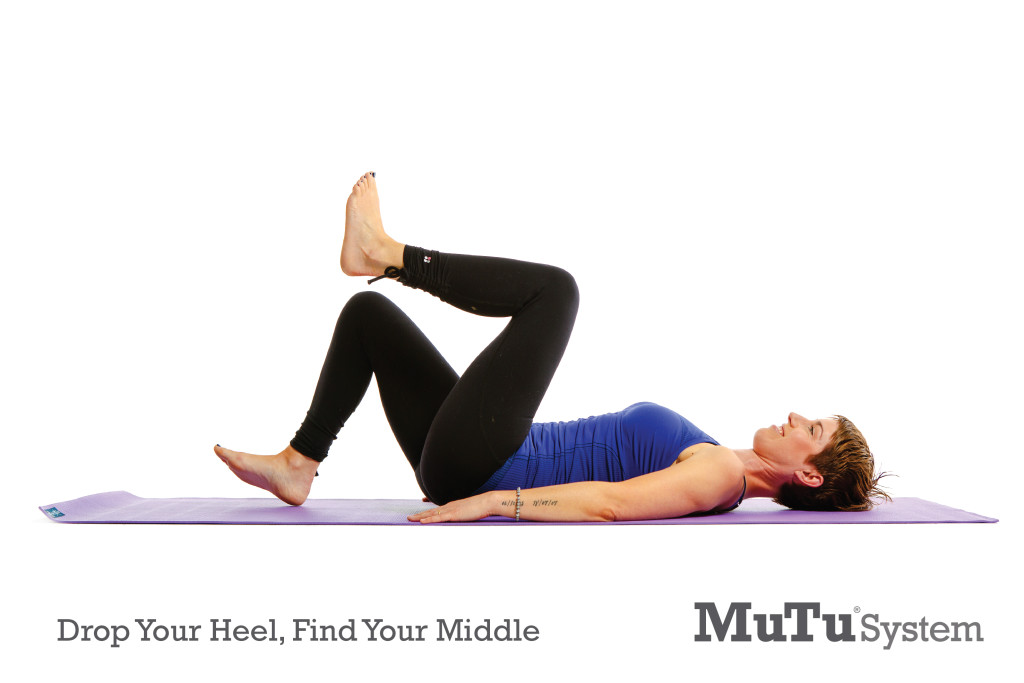 – Lie on your back, bringing your legs up with knees bent to a 90-degree angle.
– Lie on your back, bringing your legs up with knees bent to a 90-degree angle.
– Place your hands on your knees to support them.
– Exhale as you draw belly button to spine, draw in your pelvic floor and slowly drop 1 heel to touch the floor.
– Inhale, resting the heel on the floor.
– Then drop the other heel as you breathe out and engage your core. Breathe into the back of your rib cage.
– Don’t hold your breath, move slowly with your breath! Focus on your lower abdomen drawing in, not bulging out, as you drop your heel to the floor.
***
2. Squeeze Your Knees, Find Your Undercarriage
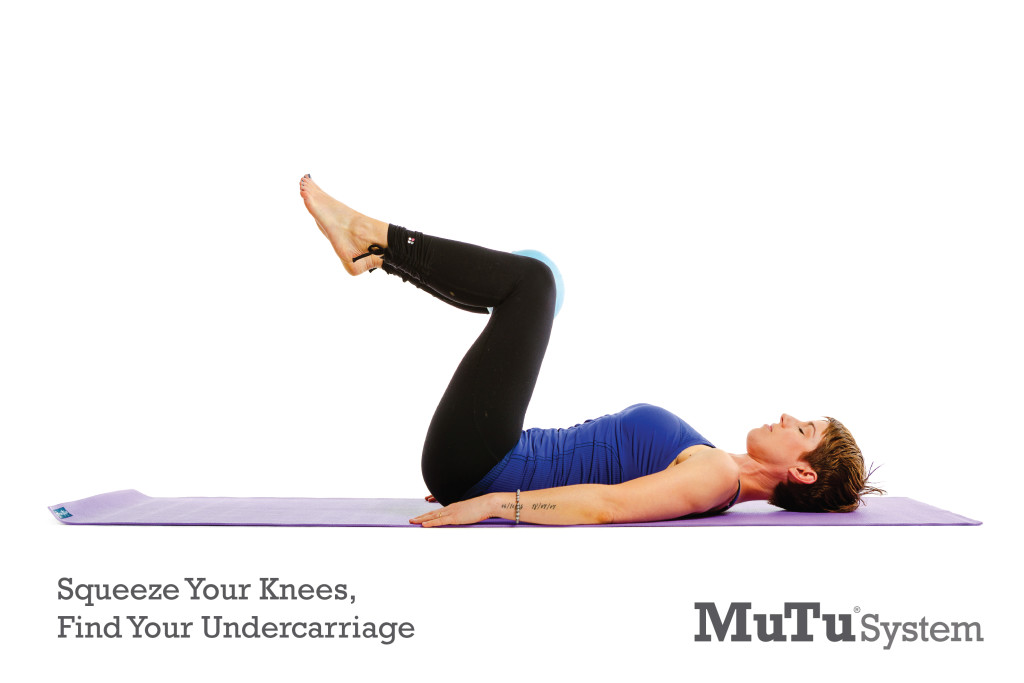 – Lie on your back with knees bent up and feet flat on the floor.
– Lie on your back with knees bent up and feet flat on the floor.
– Relax your head and neck and settle into neutral spine. There should be a small gap under the small of your back.
– Place a small ball (Pilates ball or child’s soccer ball is fine!) between your knees and gently squeeze it, feeling the muscles of your inner thighs and pelvic floor contract. Don’t worry if you can’t identify the separate contractions at first, your pelvic floor muscles work when your inner thigh muscles work!
– As you inhale, relax your muscles and release the squeeze on the ball. As you exhale, squeeze the ball.
– Don’t hold your breath! Breathe steadily and move with your breath.
– Your deep abdominal muscles should work together (co-contract) with your pelvic floor. You’re not squeezing your buttocks or inner thighs,.
– Try to focus on drawing your pelvic floor up as you squeeze the ball. Very gently draw your lower abdomen (just below your belly button) inwards. Don’t suck it in forcefully!
***
3. You need to correct your ALIGNMENT – the cause of that excessive pressure and loading.
Alignment tips during the above exercises:
Don’t thrust your ribs upwards! Imagine trying to keep the backs of your lower ribs in contact with the floor. Don’t push your lower back into the floor or tilt your hips – try to keep the slight natural, neutral curve of your spine. It will help to place a cushion or bolster under your head and upper shoulders to keep your ribs down.
You are not sucking in your stomach, holding your breath, moving your ribs or your shoulders. You’re not tucking your butt / tailbone under you or thrusting your hips. All of these pelvic tilts indicate the Transverse is not working. You have to first isolate this muscle and re-connect with it if it is going to play its vital role in your core and pelvic floor system again.
(find more in this post about alignment)
Whole body alignment tips:
Don’t suck in your stomach or clench your butt underneath you! If muscles are ‘switched on’ the whole time, they simply have nowhere further to go when they are required to do their job effectively. It’s important to know that a tight muscle is not strong, it is under tension, weak and ineffective, as it is unnaturally shortened and unable to work through its full range of motion. This applies to all muscles, including your butt, ‘core’ and your pelvic floor. Let them go!
Alignment adjustments from your feet upwards will make a difference! Point your feet straight ahead, not out to the sides as you walk, and check in on your ‘duck feet’ as you stand.
Walk every day, being mindful of alignment adjustments. You should be wearing shoes without heels, looking straight ahead and working your glutes as you walk.
***
4. Squat! and stretch every day.
– Feet flat.
– Weight through heels.
– Shins are vertical.
– Butt out and back.
– Don’t tuck your tailbone!
It’s a lot to remember, but just keep practicing a few times a day and all the elements will start to come more naturally. Your body and mind will start to reconnect, allowing your entire core to work unconsciously to support you as it should.
***
Next you have to learn to ENGAGE your transverse abdominis and pelvic floor muscles effectively and correctly. This is important not only when you exercise, but also during everyday movements like lifting, sneezing or twisting. This is a natural, reactive movement which you won’t always have to do consciously! But to re-connect, realign, and restore, we isolate at first.
Once you’ve found it, THEN you need to STRENGTHEN your core. Try this exercise for core, pelvic floor glue and thigh work!
***
5. 2 Balls and a Perky Butt
– Sit on your exercise ball, then walk your legs forward as you lie back over the ball.
– Take your feet far enough forward so that just your upper back and shoulders are supported by the ball.
– Feet are flat, shins vertical.
– Hold the small Pilates ball between your knees.
– Let your butt drop towards the floor, then drive through your heels to lift your hips while squeezing the ball with your inner thighs.
– Exhale and engage.
***
For more information on the MuTu System, click here. As always, InspiredRD readers get 15% off any MuTu System with the code “INSPIRED15”.
This post contains affiliate links.


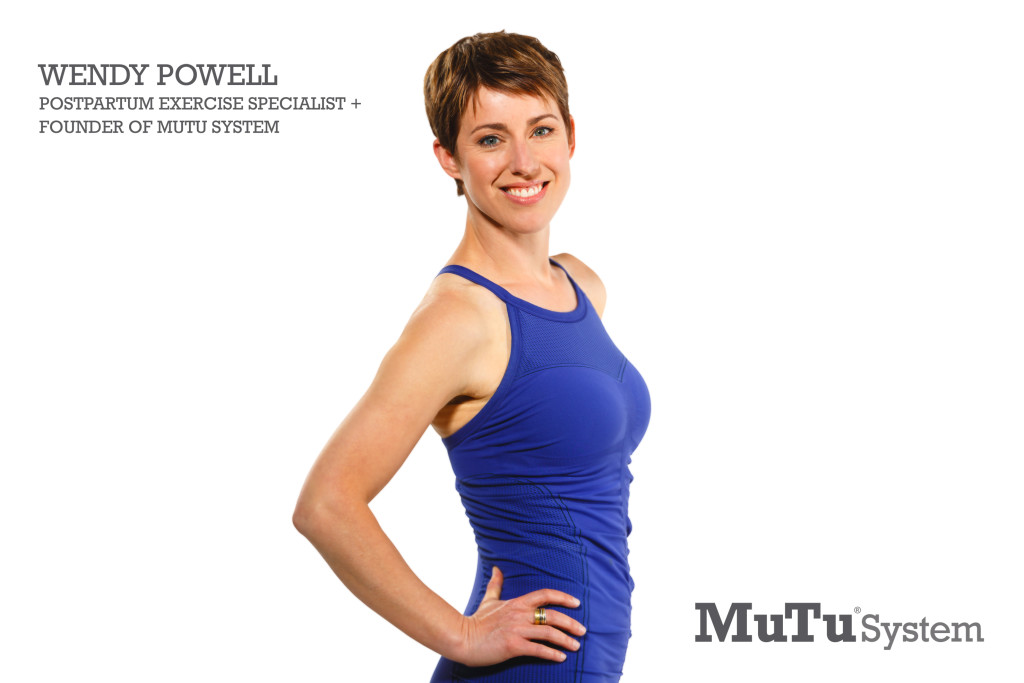
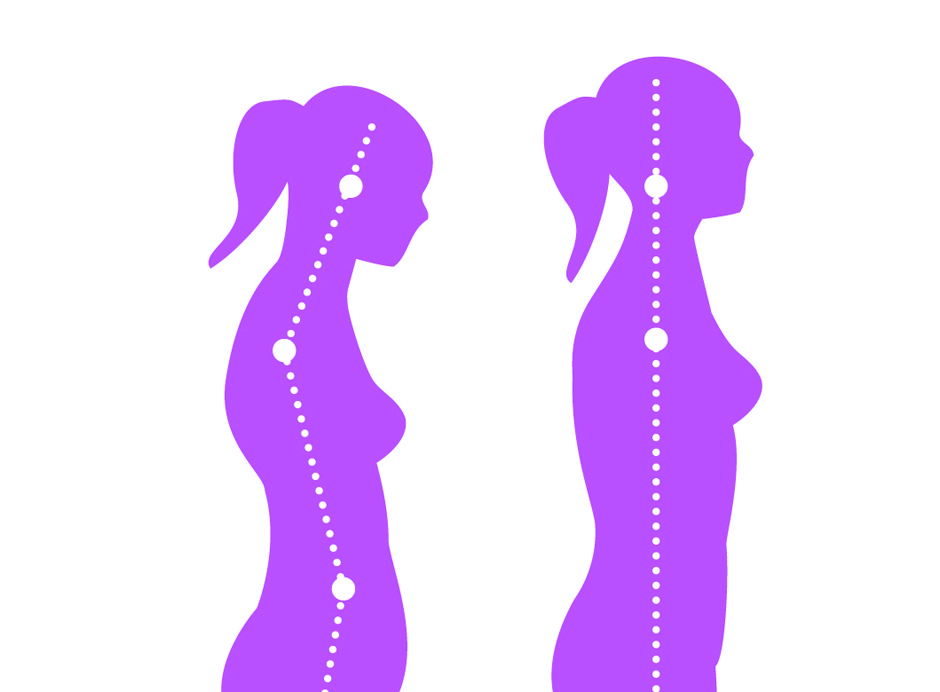
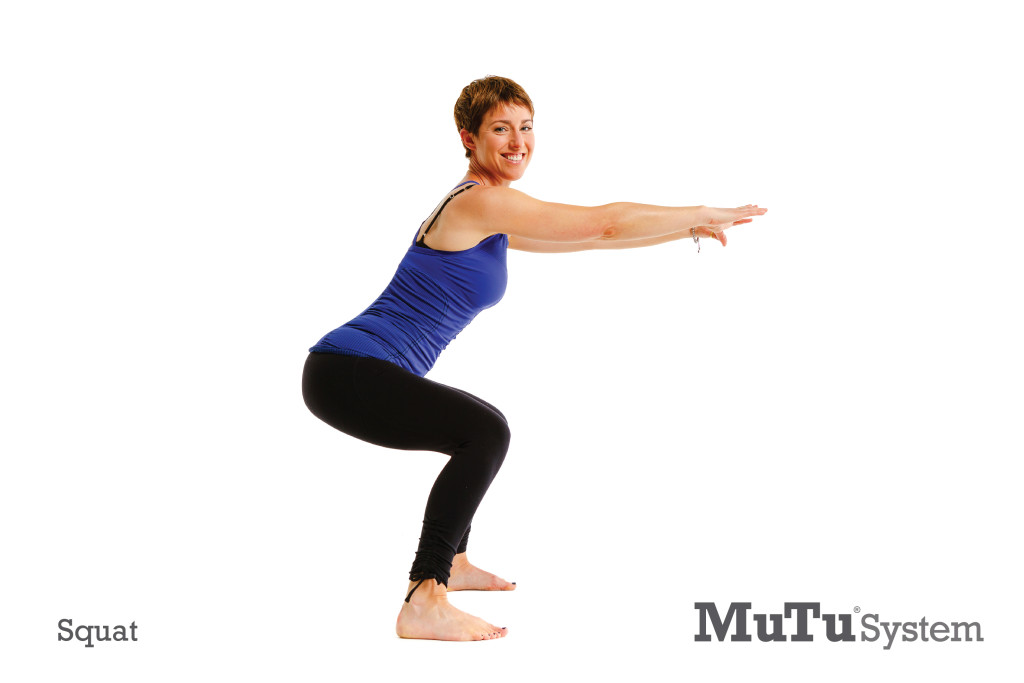

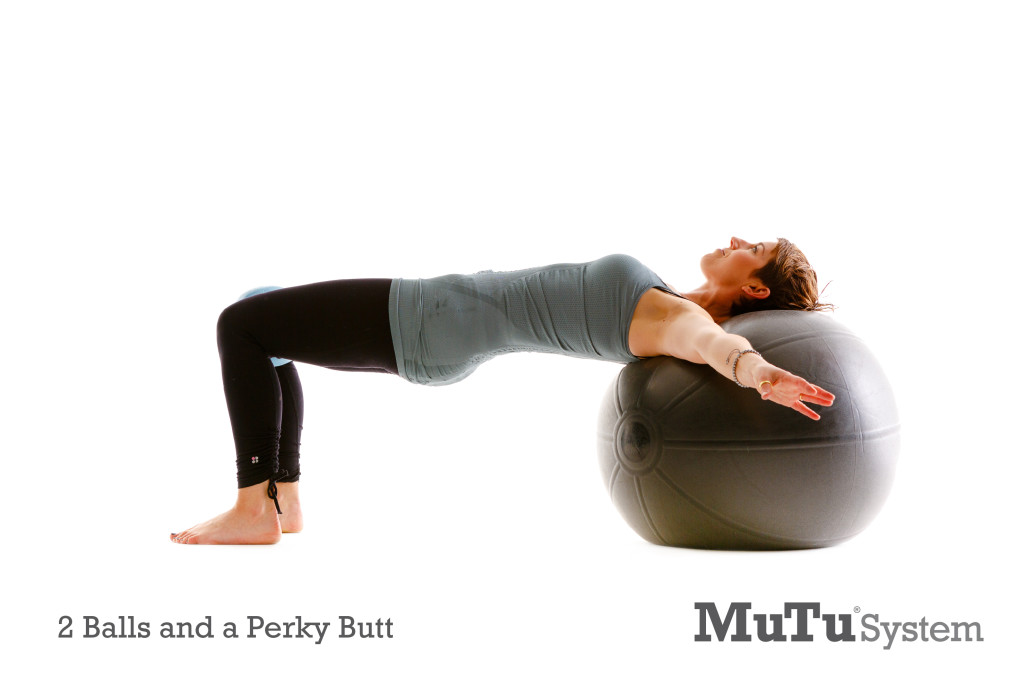

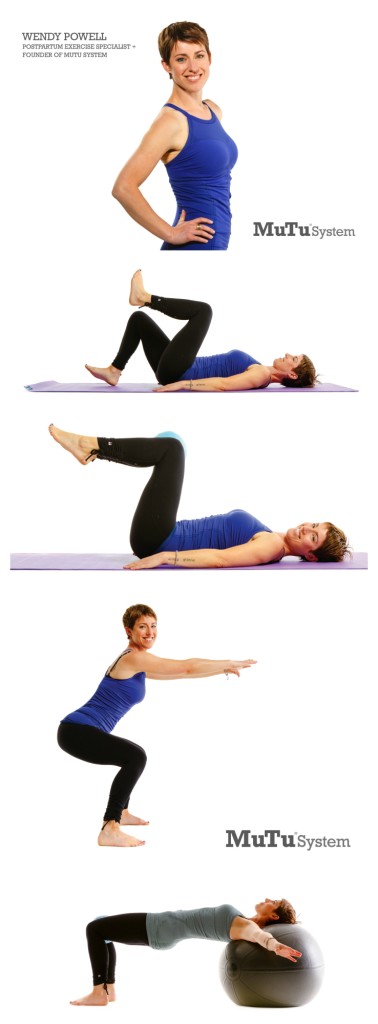
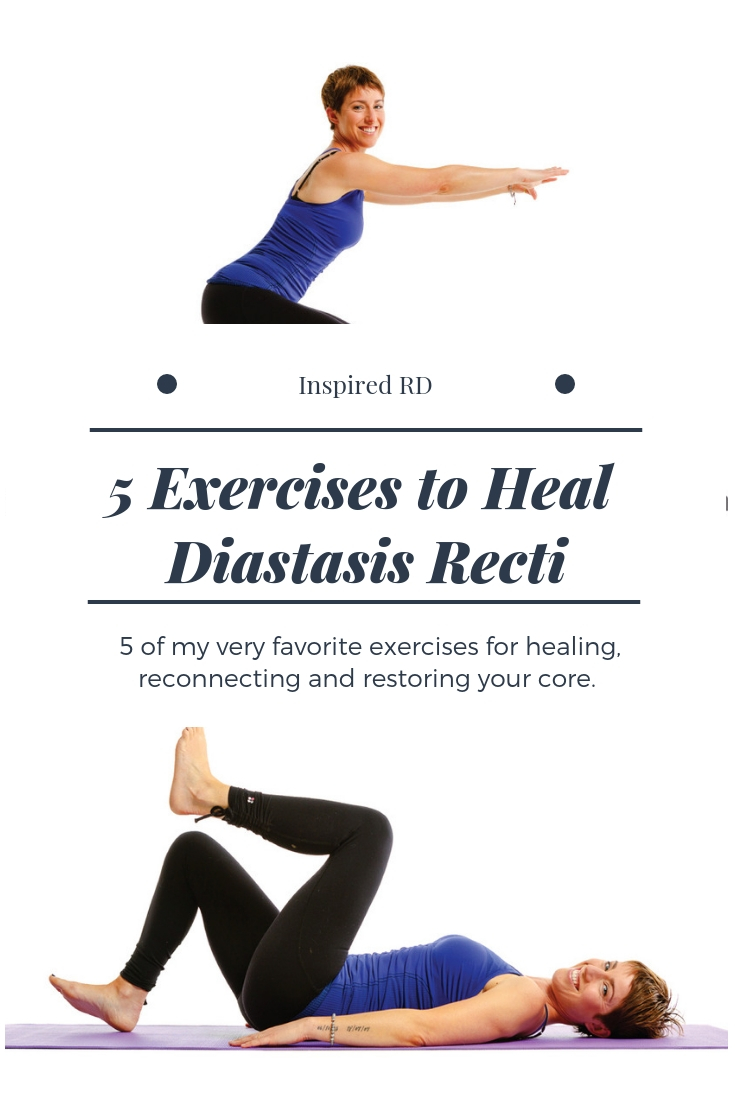
I am just begining this new process/life style
I have 3 kids and have had diastasis recti for 7 years now. My baby is 6 months old and my core had gotten much worse after the 3rd. Any tips or advice would be helpful on this journey to get my body back together.
Thank you, Laura Ritsche